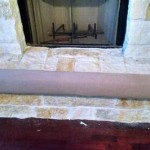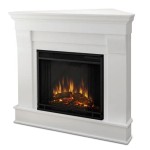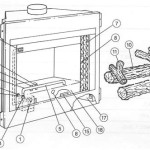Double Sided Fireplace: Bridging Indoor and Outdoor Spaces
A double-sided fireplace, also known as a see-through or peninsula fireplace, presents a distinctive architectural feature that offers a unique way to connect indoor and outdoor living areas. These fireplaces allow for a visible fire from two adjacent spaces, blurring the lines between the interior of a home and its exterior landscape. The concept revolves around a single firebox accessible and visible from both sides, providing warmth and ambiance to two separate environments simultaneously. This design element not only maximizes the visual impact of the fireplace but also contributes to the overall atmosphere and functionality of the spaces it connects.
The installation of a double-sided fireplace is a sophisticated project requiring careful planning and execution. It necessitates a thorough understanding of building codes, venting requirements, and structural considerations. Unlike traditional single-sided fireplaces, the placement of a double-sided unit often involves modifying existing walls or incorporating the fireplace into the initial architectural design of the building. The benefits, however, are significant, enhancing both the aesthetic appeal and the practical usability of both the indoor and outdoor areas.
Materials used in the construction of double-sided fireplaces vary widely, catering to diverse aesthetic preferences and budgetary constraints. Options range from traditional brick and stone to contemporary concrete and metal. The choice of materials significantly impacts the overall look and feel of the fireplace, as well as its thermal performance and durability. Furthermore, the design of the firebox itself can vary, with options including traditional wood-burning models, gas-fueled units, and electric alternatives, each offering distinct advantages and disadvantages in terms of fuel efficiency, maintenance, and environmental impact.
Aesthetic and Functional Benefits
The primary advantage of a double-sided fireplace lies in its ability to visually connect two distinct spaces. This connection fosters a sense of continuity and flow, making both areas feel more integrated and harmonious. For instance, a double-sided fireplace positioned between a living room and an outdoor patio can create a seamless transition, extending the indoor living space outwards and providing a focal point for both areas. This feature is particularly valuable in homes with limited outdoor space, as it allows residents to enjoy the ambiance of a fire while remaining partially sheltered.
Beyond its aesthetic appeal, a double-sided fireplace also offers functional advantages. It can effectively distribute heat to both the indoor and outdoor spaces, creating a comfortable environment for gatherings and relaxation. This is particularly beneficial during cooler months, allowing homeowners to extend their enjoyment of outdoor spaces into the shoulder seasons. Moreover, the fireplace can serve as a natural divider, defining distinct zones within the larger space without completely obstructing the view or blocking the flow of traffic.
The design flexibility associated with double-sided fireplaces is another significant advantage. They can be incorporated into a wide range of architectural styles, from rustic and traditional to modern and minimalist. The ability to customize the materials, finishes, and overall design of the fireplace allows homeowners to create a unique feature that complements their existing décor and reflects their personal style. This customization extends to the choice of fuel type, with gas and electric options providing greater control over heat output and convenience compared to traditional wood-burning models.
Installation Considerations
The installation of a double-sided fireplace is a complex undertaking that requires careful planning and adherence to building codes. The first step involves determining the appropriate location for the fireplace, taking into account factors such as structural integrity, ventilation requirements, and the desired visual impact. In many cases, professional architectural or engineering assistance is necessary to ensure that the fireplace is properly integrated into the building's design.
Venting requirements are a critical consideration, particularly for wood-burning and gas-fueled fireplaces. Proper ventilation is essential to ensure that combustion byproducts are safely and efficiently removed from the building, preventing the accumulation of harmful gases. The venting system must be designed and installed in accordance with local building codes and manufacturer specifications. For electric fireplaces, venting is not required, simplifying the installation process.
Structural considerations are also paramount. The weight of the fireplace, particularly if it is constructed from heavy materials such as brick or stone, must be adequately supported by the building's foundation and framing. In some cases, additional structural reinforcement may be necessary to ensure the stability and safety of the fireplace. Furthermore, the design of the surrounding walls and floors must take into account the potential for heat transfer and the need for fire-resistant materials.
Material Selection and Fuel Options
The selection of materials for a double-sided fireplace is influenced by a variety of factors, including aesthetic preferences, budgetary constraints, and the desired level of maintenance. Traditional materials such as brick and stone offer a timeless and durable option, while more contemporary materials like concrete and metal provide a sleek and modern look. The choice of materials also affects the thermal performance of the fireplace, with denser materials generally providing better heat retention.
Gas-fueled fireplaces offer a convenient and efficient alternative to traditional wood-burning models. They provide instant heat and require minimal maintenance, making them a popular choice for homeowners who value convenience. Gas fireplaces can be easily controlled with a thermostat or remote control, allowing for precise temperature adjustments. However, they require a gas line connection, which may necessitate professional installation.
Electric fireplaces are another option, offering ease of installation and operation. They do not require venting or a gas line connection, making them suitable for a wide range of locations. Electric fireplaces use electric resistance heating to generate heat and often feature realistic flame effects. While they may not provide the same level of heat as wood-burning or gas-fueled models, they offer a safe and convenient way to add ambiance and warmth to a space.
Wood-burning fireplaces offer the traditional charm and ambiance of a real fire. They provide a significant amount of heat and create a cozy atmosphere. However, they require a constant supply of wood, regular cleaning, and proper ventilation to ensure safe operation. Wood-burning fireplaces also produce smoke and ash, which may contribute to air pollution.
Ultimately, the choice of materials and fuel options for a double-sided fireplace depends on the individual homeowner's priorities and preferences. Careful consideration of these factors is essential to ensure that the fireplace meets the desired aesthetic, functional, and budgetary requirements.

White Mountain Hearth Dvct40csp Out Rushmore Clean Face Direct Vent Double Sided Indoor Outdoor Fireplace With Log Set 40 Inches

Double Sided Indoor Outdoor Fireplace Heat Glo

23 Luxurious Double Sided Fireplaces Fireplace Photos

Benefits Of Installing An Indoor Outdoor Fireplace Wyckoff

Stellar Transcend Indoor Outdoor Double Sided Gas Fireplace Fireside Hearth Home

Double Sided Indoor Outdoor Fireplace Heat Glo

Indoor And Out No Limitations With Davinci Lopi

42 Inviting Fireplace Designs For Your Backyard Indoor Outdoor Fireplaces Home Dream House

Home Is Where The Hearth Truexcullins

Double Sided Fireplaces Fireplace Modus
Related Posts








